第147章 CHAPTER XXI.(1)
FERTILITY OF THE COUNTRY ON THE BANKS OF THE RAHAD.
WE daily followed the banks of the Rahad, the monotony of which I will not inflict upon the public. This country was a vast tract of wonderfully fertile prairie, that nearly formed an island, surrounded by the Rahad, Blue Nile, Great Nile, and Atbara; it was peopled by various tribes of Arabs, who cultivated a considerable extent upon the banks of the Rahad, which for upwards of a hundred miles to the north were bordered with villages at short intervals. Cotton and tobacco were produced largely, and we daily met droves of camels laden with these goods, en route for the Abyssinian market. We had now fairly quitted Abyssinian territory, and upon our arrival at the Rahad we were upon the soil of Upper Egypt. I was much struck with the extraordinary size and condition of the cattle. Corn (dhurra) was so plentiful that it was to be purchased in any quantity for eight piastres the rachel, or about 1s. 8d. for 500 pounds;pumpkins were in great quantities, with a description of gourd with an exceedingly strong shell, which is grown especially for bowls and other utensils; camel-loads of these gourd-basins packed in conical crates were also journeying on the road towards Gallabat. Throughout the course of the Rahad the banks are high, and, when full, the river would average forty feet in depth, with a gentle stream, the course free from rocks and shoals, and admirably adapted for small steamers.
The entire country would be a mine of wealth were it planted with cotton, which could be transported by camels to Katariff, and thence direct to Souakim. We travelled for upwards of a hundred miles along the river, through the unvarying scene of flat alluvial soil; the south bank was generally covered with low jungle. The Arabs were always civil, and formed a marked contrast to the Tokrooris; they were mostly of the Roofar tribe. Although there had been a considerable volume of water in the river at the point where we had first met it, the bed was perfectly dry about fifty miles farther north, proving the great power of absorption by the sand. The Arabs obtained water from deep pools in the river, similar to those in the Atbara, but on a small scale, of not sufficient importance to contain hippopotami, which at this season retired to the river Dinder. Wherever we slept we were besieged by gaping crowds of Arabs: these people were quite unaccustomed to strangers, as the route we had chosen along the banks of the Rahad was entirely out of the line adopted by the native merchants and traders of Khartoum, who travelled via Abou Harraz and Katariff to Gallabat. These Arabs were, as usual, perfectly wild, and ignorant of everything that did not immediately concern them. My compass had always been a source of wonder to the natives, and I was asked whether by looking into it I rould distinguish the "market days" of the different villages.
My own Tokrooris continually referred to me for information on various topics, and, if I declined to reply, they invariably begged me to examine my moondera (mirror), as they termed the compass, and see what it would say. This country swarmed with Arabs, and abounded in supplies: superb fat oxen were seven dollars each; large fowls were a penny; and eggs were at the rate of nine for a penny farthing.
We arrived at a large village, Sherrem, on May 11, having marched 118 miles in a straight line along the course of the Rahad. The heat was extreme, but I had become so thoroughly accustomed to the sun that I did not feel it so much as my men, whose heads were covered with a thin cap of cotton (the tageea). My camel-men had expected to find their families at a village that we had passed about six miles from Sherrem, and they had been rejoicing in anticipation, but on arrival we found it deserted,--"family out of town;" the men were quite dejected; but upon arrival at Sherrem they found all their people, who had migrated for water, as the river was dry. We waited at Sherrem for a couple of days to rest the men, whose feet were much swollen with marching on the burning soil. Although frequent showers had fallen at Gallabat, we had quickly entered the dry country upon steering north, where neither dew nor rain had moistened the ground for many months. The country was treeless on the north bank of the Rahad, and the rich alluvial soil was free from a single stone or pebble for many miles. Although for 118 miles we had travelled along the course of the Rahad, throughout this distance only one small brook furrowed the level surface and added its waters during the rainy season to the river; the earth absorbed the entire rainfall. Our camels were nearly driven mad by the flies which swarmed throughout the fertile districts.
On the 15th of May we arrived at Kook, a small village on the banks of the Rahad, and on the following morning we started to the west for the river Dinder. The country was the usual rich soil, but covered with high grass and bush; it was uninhabited, except by wandering Arabs and their flocks, that migrate at the commencement of the rainy season, when this land becomes a mere swamp, and swarms with the seroot fly. At 6.30 we halted, and slept on the road. This was the main route to Sennaar, from which place strings of camels were passing to the Rahad, to purchase corn. On the 16th of May, we started by moonlight at 4.30 A.M.
due west, and at 7.30 A.M. we arrived at the river Dinder, which, at this point, was eighteen miles from the village of Kook, on the Rahad.